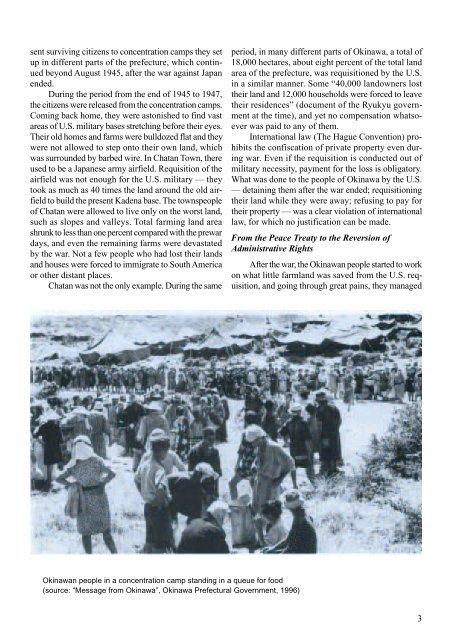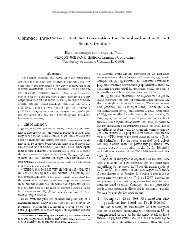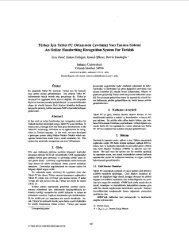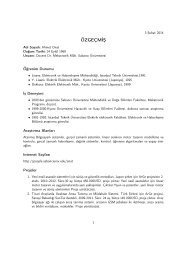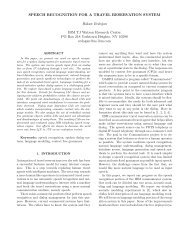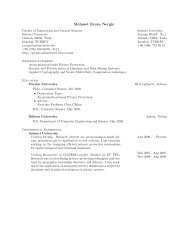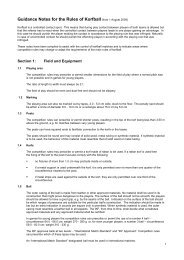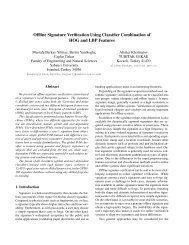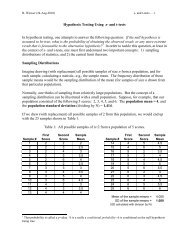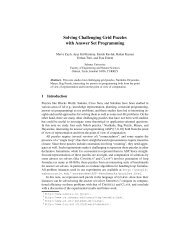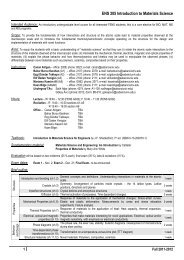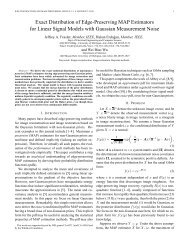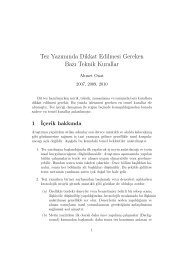PROBLEMS OF U.S. MILITARY BASES IN OKINAWA
PROBLEMS OF U.S. MILITARY BASES IN OKINAWA
PROBLEMS OF U.S. MILITARY BASES IN OKINAWA
Create successful ePaper yourself
Turn your PDF publications into a flip-book with our unique Google optimized e-Paper software.
sent surviving citizens to concentration camps they set<br />
up in different parts of the prefecture, which continued<br />
beyond August 1945, after the war against Japan<br />
ended.<br />
During the period from the end of 1945 to 1947,<br />
the citizens were released from the concentration camps.<br />
Coming back home, they were astonished to find vast<br />
areas of U.S. military bases stretching before their eyes.<br />
Their old homes and farms were bulldozed flat and they<br />
were not allowed to step onto their own land, which<br />
was surrounded by barbed wire. In Chatan Town, there<br />
used to be a Japanese army airfield. Requisition of the<br />
airfield was not enough for the U.S. military — they<br />
took as much as 40 times the land around the old airfield<br />
to build the present Kadena base. The townspeople<br />
of Chatan were allowed to live only on the worst land,<br />
such as slopes and valleys. Total farming land area<br />
shrunk to less than one percent compared with the prewar<br />
days, and even the remaining farms were devastated<br />
by the war. Not a few people who had lost their lands<br />
and houses were forced to immigrate to South America<br />
or other distant places.<br />
Chatan was not the only example. During the same<br />
period, in many different parts of Okinawa, a total of<br />
18,000 hectares, about eight percent of the total land<br />
area of the prefecture, was requisitioned by the U.S.<br />
in a similar manner. Some “40,000 landowners lost<br />
their land and 12,000 households were forced to leave<br />
their residences” (document of the Ryukyu government<br />
at the time), and yet no compensation whatsoever<br />
was paid to any of them.<br />
International law (The Hague Convention) prohibits<br />
the confiscation of private property even during<br />
war. Even if the requisition is conducted out of<br />
military necessity, payment for the loss is obligatory.<br />
What was done to the people of Okinawa by the U.S.<br />
— detaining them after the war ended; requisitioning<br />
their land while they were away; refusing to pay for<br />
their property — was a clear violation of international<br />
law, for which no justification can be made.<br />
From the Peace Treaty to the Reversion of<br />
Administrative Rights<br />
After the war, the Okinawan people started to work<br />
on what little farmland was saved from the U.S. requisition,<br />
and going through great pains, they managed<br />
Okinawan people in a concentration camp standing in a queue for food<br />
(source: “Message from Okinawa”, Okinawa Prefectural Government, 1996)<br />
3


